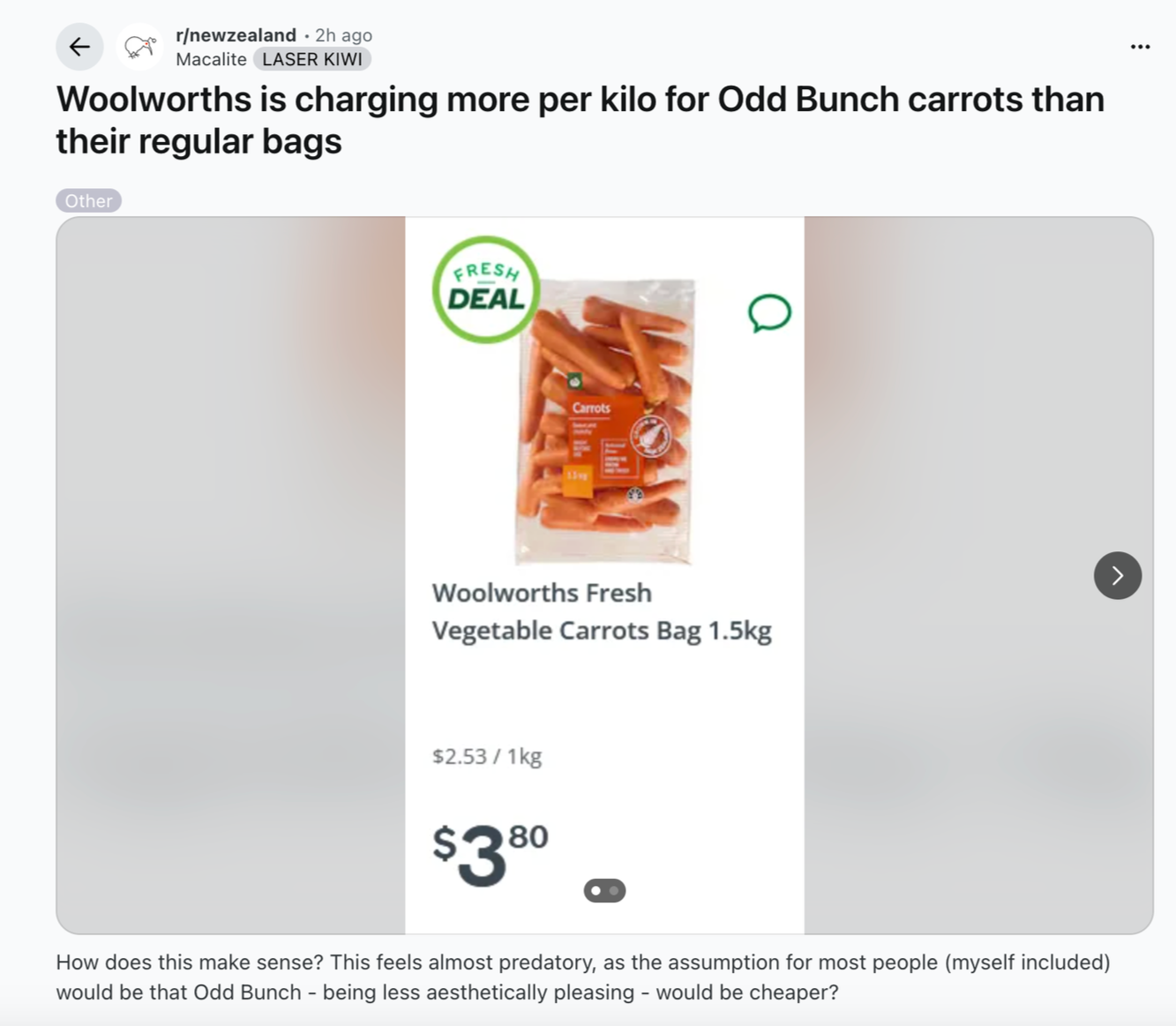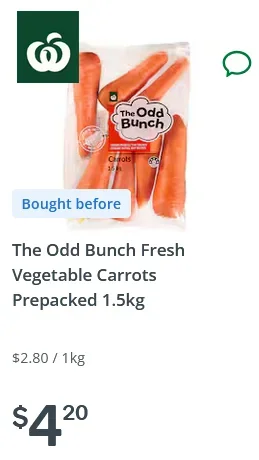“Odd Bunch” carrots at a higher price than regular carrots — what’s going on?
A recent post on the subreddit r/newzealand has sparked fresh frustration among Kiwi shoppers who say that the “odd bunch” carrots sold by Woolworths are more expensive than the regular variety.
Here are the figures being cited:
Regular carrots: $3.80
“Odd Bunch” carrots: $4.20
On the face of it this looks odd: the “Odd Bunch” range is often positioned as a lower‐cost, lower‐grade line — imperfect shape, irregular size — and the implication is that you should pay less for them or at least not more.
Odd Bunch Carrots / Supplied
What is the “Odd Bunch” line?
Woolworths’ “Odd Bunch” produce brand is described as fresh fruits and vegetables with irregular shape, size or appearance, sold under a value messaging — often to reduce food waste and offer shoppers an alternative. Bunch+2Bunch+2 The logic would seem to be: less perfect produce = lower cost.
Yet, as surfacing in the Reddit post and consumer commentary, that logic appears to break down when the price is actually higher.
Why does this matter? (And why now?)
Struggling households + food inflation
Households across New Zealand are increasingly squeezed by the cost of living. Food prices have been rising (alongside utilities, rents, transport). In such a climate, paying more for a line that is marketed as “value” or “imperfect produce” feels counter‑intuitive.
When a “value” range ends up costing more than the “standard” one, it sends a signal of either:
weird pricing or margin decisions by the retailer
a lack of transparency in what you’re paying for
or simply that consumers are not being rewarded for taking the “irregular” produce option.
Brand trust and choice
Shoppers expect that if they choose something labelled “Odd Bunch” they are getting both the trade‑off (irregularity) and some saving. If the saving isn’t there — or worse, the line is more expensive — you lose trust. In forums consumers note this:
“It may be I should buy the more expensive carrots rather than the bags of Odd Bunch … but I just feel this is a recent issue.” Foodlovers Forums
That kind of sentiment erodes willingness to engage with value‑ranges and may push shoppers toward bulk‑standard or alternative stores.
Value perception vs reality
If the “Odd Bunch” carrots cost $4.20 and the “regular” carrots $3.80 (as reported), the value messaging flips. Unless there are measurable quality differences (taste, freshness, weight) that justify the higher price, consumers will question it.
What this says about the bigger picture
This small case of carrot pricing reflects a broader trend: consumers are highly sensitive now to value, fairness, and transparency in supermarket pricing. With tighter budgets, any mismatch between promise (value) and reality (higher cost) is amplified.
For Woolworths and other supermarkets, it suggests that value‑oriented ranges need to clearly deliver on the promise of lower cost and sufficient quality. If they don’t, they may lose credibility just when households need good value most.
Takeaway for consumers
Always check unit price (per kg or per 100 g) rather than just bag price.
Compare the weights of the standard vs “odd bunch” pack.
Don’t assume “imperfect” always means “cheaper” — check the pricing.
Ask questions: If you see “odd bunch” labelled produce that is more expensive, check with customer service about what the extra cost might be.
Given rising cost pressures, every dollar counts — being aware and questioning value is more important than ever.


